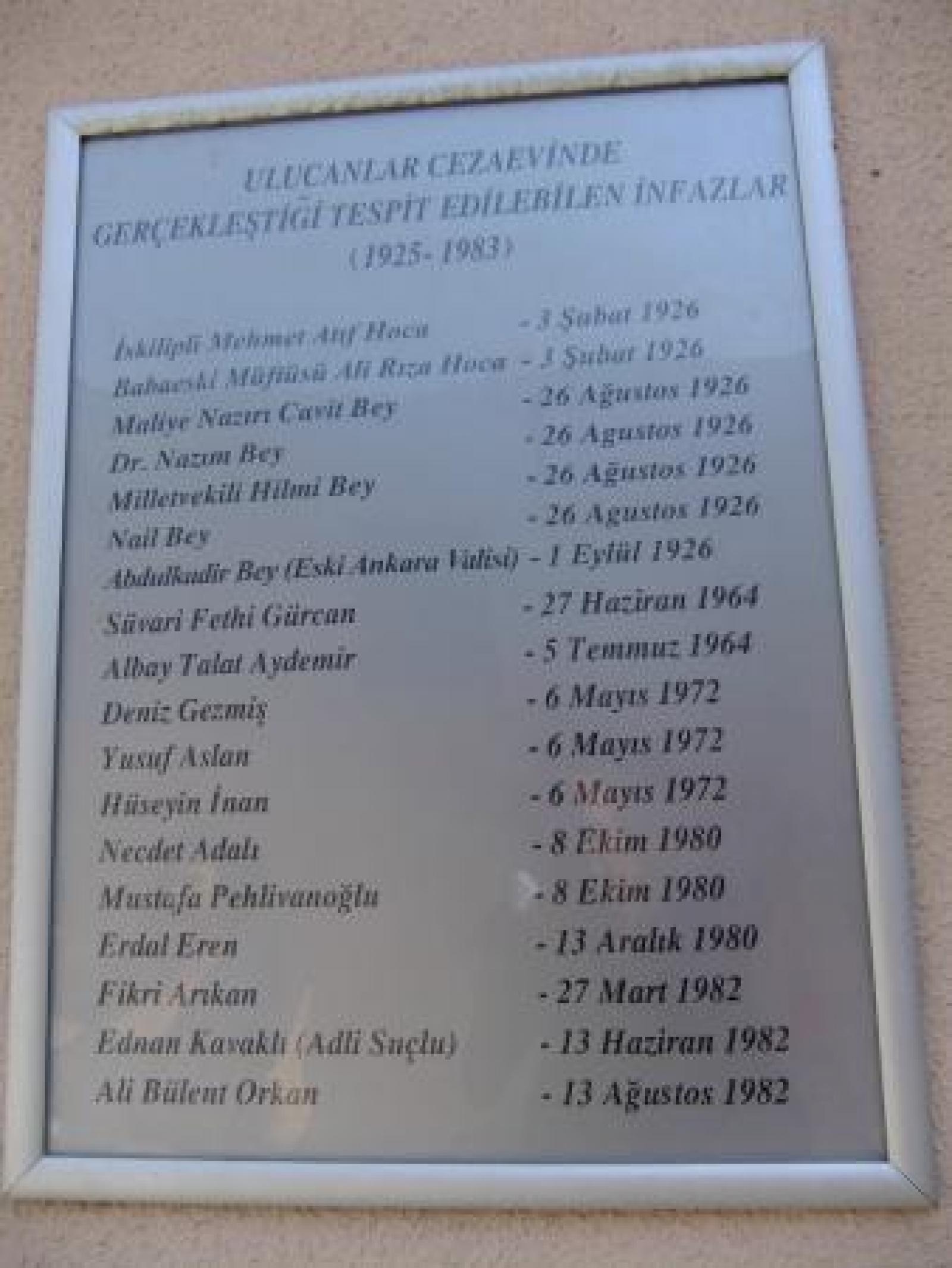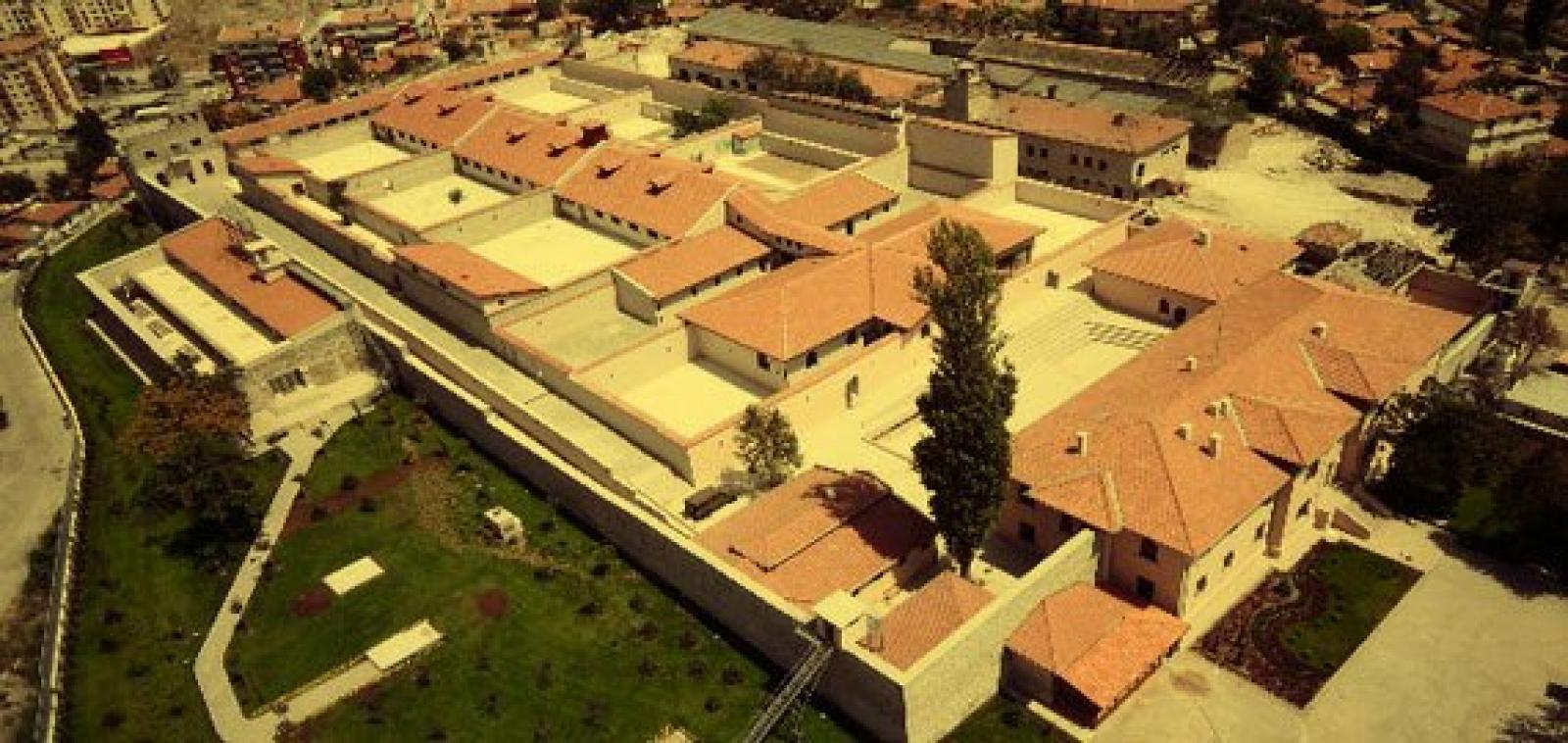Ulucanlar Prison
Ulucanlar Prison was built in 1925, following the establishment of the Turkish Republic in 1923. Thus looking at the history of this prison also means analyzing the history of politics in Turkey, since many political prisoners were incarcerated in Ulucanlar. Until it was closed in 2006, the prison became one of the centers of systematic human rights violations and impacted the memories of people from different political sides. One of the first political executions in the prison was İskilipli Atıf’s execution in 1926. İskilipli Atıf Hoca was known for his criticism to western civilization and targeted the newborn secular state. Following the military intervention in 1971, three prominent leaders of the People’s Liberation Army of Turkey were imprisoned in Ulucanlar Prison and subject to various rights violations. The court condemned them to death and ordered the execution of Deniz Gezmiş, Yusuf Aslan and Hüseyin İnan on May 6, 1972. After the 1980 military coup, Erdal Eren (17), a leftist high school student, was also imprisoned in Ulucanlar. He was executed on December 18, 1980, after his age was officially changed to 18 since it was not legally permissible to hang someone under 18.
One of the cruelest episodes in the history of the prison happened on September 26, 1999. To increase the level of isolation, the military decided to transfer political prisoners from wards to cells, and began a bloody operation in prominent Turkish prisons that mainly targeted prisoners resisting this transformation through hunger strike and death-fasting. On September 26th, the first operation took place in Ulucanlar Prison, where 10 prisoners were killed and dozens seriously wounded. Forensic reports show that inmates were shot by soldiers at close range. In the following months, interventions continued in other prisons and culminated on December 19th, with the operation called “Return to Life” by the state and “The December 19 Massacre” by the prisoners. 161 soldiers who had been involved in the massacre were acquitted by the Court of Assizes in 2008.
In 2006, the prison closed after a bigger one was constructed in Ankara. The first intention of the Ankara municipality was to turn the prison into a bazaar, but the Ankara Chamber of Architects and civil society organizations lobbied for its transformation into a museum. The civil society memorialization project was then shelved by the local council, which opened the prison museum in 2011, following a very different design. The prison is still present in collective memory and has also influenced popular culture. Yılmaz Güney was inspired from Ulucanlar Prison in his 1983 film Duvar. The 1989 film Uçurtmayı Vurmasınlar, starring Nur Sürer as a female political prisoner, was shot in the prison.
Images



References
“Collective memory and the populist cause: The Ulucanlar Prison Museum in Turkey, Memory Studies, August 2021.”
“THE INTANGIBLE WITHIN TANGIBLE: CONSERVATION OF ARCHITECTURAL HERITAGE AS A LOCUS OF MEMORY THE CASE OF ANKARA ULUCANLAR PRISON, Middle East Technical University, December 2021.”
Museum of Ulucanlar Prison, MemorializeTurkey, 22 March 2022.
Turkey’s 1980 coup lingers in memories on 41st anniversary, Daily Sabah, 12 September 2021.